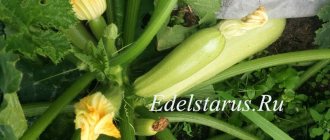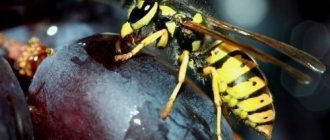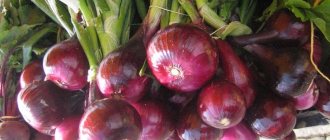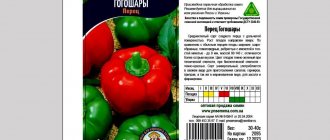Fruits and berries » Grapes
0
953
Article rating
Kira Stoletova
Among the grape varieties bred by breeders, the Blagovest grape has gained the most popularity. This is a classic representative of table culture, with a lot of impressive characteristics that are interesting to every winegrower.
Vinograd Blagovest
Description and appearance of the Blagovest variety
Grapes of this variety are grown in regions with a southern or temperate climate. Let's look at a more detailed description below.
Appearance of Blagovest grapes
Bush and vine
The shrub is quite strong and tends to grow. The vine is usually medium to vigorous and light brown in color.
The shoots are strong and have a light green tint. The leaves of the plant are dissected and dark green in color.
Flowering period
Flowers are bisexual, active self-pollination. Flowering occurs in early to mid-June. 3-4 inflorescences usually appear on one shoot.
"Blagovest" is not prone to peas. There is a predisposition to compaction of bunches.
bunches
The bunches are quite large, one weighs 1-1.2 kg. Sometimes a mature bunch reaches a weight of up to 3 kg.
The clusters have the shape of a slightly elongated cone or a rounded cylinder. The density is different - loose or dense.
Berries
The grapes are large and oval. They grow up to 3 cm in length, with an average weight of up to 15 g. The color is green with a hint of yellow. If the fruits are exposed to the sun, the colors change to bright amber shades after ripening.
The skin is dense and does not crack when the bunches hang on the vine for a long time. The pulp is juicy. The taste is duchess, there are nutmeg notes. The seeds are small.
Dangerous diseases
The hybrid table grape variety Blagovest does not have a particular tendency to be affected by diseases and can rarely succumb to rot. There are two most common types of diseases that are most often found in this grape form - Mildew, Oidium. These are quite serious, dangerous diseases that require mandatory treatment, or even better, prevention.
Mildew attacks green areas. Externally, oily white discharge becomes noticeable. If left untreated, the outcome for the plant will be drying out and death.
To prevent the appearance of mildew, you need to choose the right place to plant bushes - more or less constant air circulation is necessary
It is also important to monitor the growth of shoots and leaves - there should be no clots. If the disease appears and continues to develop, then the only way is to use chemicals, for example, Bordeaux mixture, which is sprayed on the affected bush. The solution should be 1 or 2 percent, the procedure should be carried out regularly
The solution should be 1 or 2 percent, and the procedure should be carried out regularly.
Oidium is a rather dangerous disease that spreads throughout the green part of the plant, spreading to the bunches and berries. When infected with oidium, grape fruits become dry and crack.
Treatment of this disease will not be too difficult or problematic. First you need to remove all weeds and remnants of the vine from the place where the bush grows. It is necessary that the bushes are well ventilated; this requires high-quality air circulation and thinning of the vines themselves. When treating oidium, one cannot do without chemicals - ground sulfur or colloidal.
The Blagovest grape variety will be an excellent choice for growing in areas where the climate is temperate continental and winters are quite frosty. Fruits that have been cared for efficiently and with care will look very attractive.
Agrobiological characteristics
| Characteristics | "Blagovest" |
| Drought resistance | average |
| Frost resistance | -24°С |
| Sugar content | more than 20% |
| Aroma | Duchess |
| Productivity | On average 10 kg per bush |
| Fresh consumption | Maybe |
| Raw materials for wine | Yes |
| Transportability | high |
Reproduction methods
Krasnostop grapes are propagated by cuttings, cutting them in the fall, storing them in the basement, and then planting them first in a schoolyard, then in a permanent place. Also common is the method of propagating grapes by layering, which is bent to the ground, secured, and after germination, separated from the mother bush and planted on the site. In addition, propagation of the variety by grafting onto a strong bush is common.
Rules and features of landing
Let's look at the rules for planting the Blagovest grape variety. Photo:
How to plant and care for Blagovest grapes
Site selection and preparation
"Blagovest" grows well on fertile chernozem and sandy soils. The growing area should be well lit and protected from draft winds.
Recommended time for disembarkation
Planting cuttings can be done in both autumn and spring. In the latter case, planting should be done before the growing season begins.
The plant tolerates temperature changes calmly. The main thing is to avoid frost at the time of planting.
How to select seedlings
Before planting, the cuttings should be shortened by 2-3 eyes and the root shoots should be slightly trimmed. If there are more than 2 shoots on the cutting, then you need to leave only the tallest one among them. The day before planting, the cuttings are placed in a mixture prepared from mullein.
Planting process
Landing occurs as follows:
- dig a hole 80 cm wide and the same depth;
- You need to lay the soil mixture at the bottom of the dug hole;
- it is necessary to straighten the roots and install the cutting in the hole;
- sprinkle with earth and compact lightly;
- water with warm water and mulch the hole.
Krasnostop. The pride of Russian winemaking
Wine is trending right now. No matter how strange it may sound. It has become fashionable to drink good wines, to be able to talk at least a little about their bouquet, and, on occasion, to show off deeper knowledge by comparing wines from different years or at least from different countries.
And among the trending wines are those made from autochthonous, that is, local, varieties, those that grow only in a given area. This trend is understandable: such wines are always special, unique, inimitable. Let's finish with the epithets. Such wines, of course, can be specific, since they are usually unusual for the mass consumer. But they always leave a good impression.
Russia also has its own autochthonous varieties. One of the most popular and beloved by many is Krasnostop. Many wine lovers are hunting for wine from Krasnostop.
There are several varieties of this grape, all of them are grown in the south of our country: on the Don and in the Krasnodar Territory. The very best of them is Krasnostop Zolotovsky - an ancient Don grape. In fact, he is the personification of Russian winemaking. It got its name from the color of its crest or “foot,” which, as you might guess, is red. And Zolotovsky - in honor of the village of Stara Zolotovskaya, where this very variety was grown from ancient times.
By the way, various DNA tests are often carried out with grapes in order to establish which more ancient variety was, so to speak, the “progenitor” of the one available now. Many varieties are the results of crossing those known to us. So, in the case of Krasnostop, the results were simply amazing: his DNA did not match any other. This suggests that winemaking has existed here for a very long time, that this is an original Russian variety, grown, even appeared on our land. This adds value to him.
Wines from Krasnostop are very, very rich, deep, with an incredible fruit and berry bouquet. The hue of this wine is dark, garnet - incredibly beautiful. The wine itself is tannic, that is, astringent, but moderately balanced. Krasnostop is used to produce both single-varietal wines, in which this variety shows itself especially clearly, and blends: in combination with other varieties, Krasnostop brings special notes and zest to the wine. It is believed that Krasnostop is especially good in a duet with Merlot and Cabernet Sauvignon.
Wines from Krasnostop are produced by several Russian factories. Be sure to try Krasostop Zolotovsky Vedernikov Winery. Lefkadia also produces good wines from this variety. The Author's Wine series from Fanagoria also contains a blend with this variety. In short, quite a few Russian producers (Don and Krasnodar) produce wines from Krasnostop. And each of them is good in its own way.
You can buy Krasnostop wine at the WineStreet store.
Cultivation and care technology
Blagovest grapes are unpretentious and caring for the plant does not require much labor or time. However, to obtain a large harvest, you should familiarize yourself with some of the features of its cultivation.
Features of caring for Blagovest
Watering
Young grape bushes need regular watering, especially if they have not yet taken root. Watering should be done once every 2 weeks, but you need to pay attention to the weather. Water should not be poured under the root. You should make holes 50 cm from the bush and water from there.
Mature bushes also need watering, especially if there is a dry season. At least 5 buckets of water are poured under the grape bush. When to water:
- The first watering is carried out until the leaves bloom.
- The second watering is required 2-3 weeks before the bush blooms.
- The third is when the fruits grow to the size of peas.
- The fourth - a month before the first harvest.
- The fifth watering should be done after leaf fall, if it is a dry autumn. In case of rain there is no need for it.
ATTENTION! After watering, you need to loosen the soil around the trunk. This will provide air flow to the grape roots.
Feeding and fertilizers
The yield of grapes largely depends on what kind of nutrition the bush received. Feeding the plant should begin in the 2nd year after it is planted in open ground.
It is recommended to use mineral fertilizers. The first fertilizing is applied even before flowering. Then, during the growing season, you need to add 2 more fertilizings - once a month.
ATTENTION! Read the instructions for use carefully before using fertilizers.
Pruning shoots
It is advisable to prune the Blagovest variety in the fall, after all the leaves have fallen from the bush. No more than 30 young shoots are left on an adult plant to ensure an even load. Each shoot is cut into 8-9 eyes. Next, a vine is formed from the shoots.
Spring pruning is not recommended. However, if there are frozen branches, they should be removed.
ATTENTION! Pruning is carried out with sharp pruning shears so as not to damage the shoots. The shoot is cut in the direction from the eye.
Normalization
The Blagovest variety has its own peculiarity - a large number of fruit-bearing shoots are often observed on one bush, and 3-4 inflorescences grow on each shoot. All this is fraught with overload when ripening berries. For this reason, the bush needs normalization.
During the first 2 years, all the inflorescences are cut off from the bushes, leaving 1-2 signal clusters. Over the next 3 years, excess inflorescences are removed and only 1 brush is left, the strongest and largest.
An adult bush will also not withstand overload. The berries will be smaller, the taste will be distorted and the harvest will ripen later. Excess inflorescences should be removed, otherwise the plant will spend the next few years recuperating.
Protection from diseases and pests
"Blagovest" is highly resistant to plant diseases. If not properly cared for, the plant may be affected by oidium or mildew.
To reduce the risk of mildew infection, it is necessary to monitor the thickening of leaves and shoots, destroy weeds and make a green garter in a timely manner. As a preventative measure, you can spray the bushes with Bordeaux mixture (1% solution). This processing is carried out in 3 stages:
- The first spraying is carried out when 4-5 leaves appear on each shoot.
- The second spraying is before flowering.
- The third and subsequent sprayings - every time after rain.
Colloidal sulfur will help get rid of oidium. It is necessary to prepare a solution and spray it on the affected parts of the plant.
Sweet berries are often targeted by wasps. To protect the crop from these insects, it is necessary to place each bunch in special gauze bags. You can also make a trap: place a jar of sugar near the bush to distract the wasps from the berries.
Preparing for winter
Young Blagovest bushes need to be covered for the winter in case of severe frosts. They do this as follows:
- shoots are carefully tied;
- boards are placed on the ground and tied shoots are placed there;
- arcs made of wire or rods are installed on top;
- cover everything with covering material (tar paper, burlap) and secure them on the sides;
- a couple of holes are made in the covering material for air circulation.
In the spring, when the weather becomes warm enough, the covering material is removed and the vine is tied to a trellis.
ATTENTION! Mature bushes do not need shelter and can easily tolerate cold temperatures down to -24°C. If the region experiences cold winters above the specified temperature, the plant should be covered.
Winegrower's calendar for autumn
In the first month of autumn it is necessary to continue the work of August. Monitor the load on the bushes: if necessary, remove some bunches.
- If powdery mildew is suspected, the bushes should be treated with colloidal sulfur.
- Continue foliar feeding with phosphorus and potassium.
- By the end of September, the active harvest period begins.
In October, it is necessary to complete the harvest before the onset of frost.
- The seedlings are dug up, soaked in water for 6-8 hours and stored.
- 2 weeks after all the foliage has fallen, prune the vine.
- All plant remains are burned, and the soil between the rows is dug up.
By the beginning of November, it is necessary to complete pruning of the vines of covering varieties and carry out the last watering. Before the soil has time to freeze, cover the bushes for the winter.
- If peat or sawdust is used as a fur coat, the procedure can be postponed until light frosts (up to -10 degrees Celsius).
- You can remove the garters from the trellises and remove the remaining vines.
- Be sure to disinfect all tools after pruning.
Ripening time and yield
"Blagovest" refers to balanced types of grapes. It has an early or mid-early ripening period. The latter is more common. The ripening period is 110-115 days.
Productivity is average. From one adult bush you can collect up to 10 kg of berries.
Blagovest grape yield
“Krasnostop Zolotovsky”: we talk about the ancient Don autochthon
“Krasnostop Zolotovsky” is an ancient Don technical grape variety. Technical grapes are a group of varieties whose properties are fully revealed not in the form of a direct food product, but in the form of raw materials for the preparation of raisins, sultanas, currants, as well as for the preparation of soft and alcoholic drinks, marinade, con has an average ripening period, which typical for technical varieties - the buds open at the end of April, blooms in early June, the berries ripen in early August, reaching full maturity in early September.
Chief agronomist of Fanagoria Nikolay Moroz : “At the enterprise we use the Krasnostop Zolotovsky variety, and not its clone, Krasnostop Anapa.” It was originally brought to us from the Don, and today we already have about 100 hectares of vineyards. The seedlings are propagated in the Fanagoria-Agro nursery and are used exclusively for their own needs, not for sale. The variety is very capricious, poorly resistant to frost and disease, and requires constant attention and care from the Fanagoria team.
Deputy General Director for Science and Quality at Fanagoria Valentina Popandopulo : “Krasnostop Zolotovsky” is a very interesting variety. Produces powerful wines with a very rich color – dark ruby with purple hues. Common aroma notes: dried cherry, blueberry, prune, black pepper, chokeberry, jam and eucalyptus notes. This variety can be used to make wine that will only improve with age.”
Collection, storage and transportation of berries
Harvest as the berries ripen, usually in early to mid-September. Gardeners recommend waiting a little and letting the bunches hang. In this case, the taste of the grapes will be brighter and the aroma will be stronger.
Ripe clusters are cut off with pruning shears - this way the fruits will remain intact. The bunches are stored in a cool, dark place. The shelf life is up to 4 months.
The Blagovest variety withstands transportation well. In this case, the presentation of the grapes is not lost.
Wines of Russia On the origin of Cossack grape varieties
Hundreds and sometimes thousands of varieties, grouped by place of origin, are grown under strictly identical conditions.
It is clear that local varieties are especially fully represented in the collection: after all, the Cossack vineyards are just a stone’s throw from here.
Pukhlyakovsky white has elongated berries with spines at the tips.
Pukhlyakovsky white
not only took root in the Don vineyards, but also gave birth to several descendants.
The thing is
the fact that this variety has a female flower, and therefore all its self-germinating seedlings necessarily turn out to be hybrids.
This variety was also called the Breadwinner because it often helped out of lack of money.
Now let’s group those Don and East Caucasian varieties in which the relationship is most obvious.
Both varieties have net-wrinkled leaves with a characteristic strong shine. The leaf blades are similarly curved.
Along with the leaves having sharp teeth, some of the leaves are contrastingly smaller in size and have blunt teeth.
The refined thorn-cherry aroma characteristic of Tsimlyansk wine begins to play with new bright facets.
Local connoisseurs of Tsimlyansky varieties distinguish both related varieties not by the shape of the leaves, but by the subtle features of their shine.
Shoulder
from
Tsimlyansky black
in the delicate satin shine of its leaves.
The ancient Terek Cossack viticulture, judging by the varietal composition, was a direct continuation of the neighboring Dagestan.
The latter is confirmed by the fact that in Dagestan there is a similar bare-leaved variety of khatmi
.
| Don varieties | East Caucasian varieties / Dagestan varieties |
| Krasnostop Zolotovsky | Gimra |
| Tsimlyansky black Shoulder, Slitnoy Silnyak, Alenky Krasnyansky, Sypun black, Kumshatsky black, Varyushkin | Asyl Kara |
| Efremovsky | Chingiri kara, Sarah |
| Kumshatsky white | Gulabi white |
| Donskoy early ripening Musketny | Gulabi pink |
| Cornelian | Goat raisins |
| Pocket Hruptun white | Shaani black |
| Khatmi |
Reviews from experienced gardeners
The Blagovest grape variety is loved by both ordinary gardeners and professional winegrowers. It is most valued for its large bunches, which can be stored for a long time and tolerate even difficult transportation well.
The hybrid form “Blagovest” will appeal to everyone who loves table grape varieties that ripen early. The plant requires a minimum of care and if you follow all the rules of agricultural technology, you can get a generous harvest of very tasty and sweet berries.
History of selection
The photo above shows bunches of Blagovest grapes. This is a hybrid form. The work was carried out by V.N. Krainov. For hybridization, an amateur breeder took the well-known varieties Kishmish Radiant and Talisman. Vladimir Nikolaevich’s vineyard was located in the floodplain of the Tuzlov River (Rostov region). To avoid phylloxera, the national breeder used only resistant rootstocks Kober 5BB, CO4.
Work on hybridization began in 1995 and continued for several years. The first harvest was taken in 1999. The variety was not included in the State Register. Amateur winegrowers appreciated the yield of the variety. Blagovest has taken root in many vineyards.
Agricultural technology
After properly planting the seedlings, you will have to constantly pay attention to the plant and provide it with regular care.
Irrigation
In the first two months, the plant develops intensively, so it requires abundant, regular watering. Then the frequency is reduced, since the shoots need to stop growing and have time to ripen before frost.
Top dressing
To prevent the ovaries from falling off, foliar feeding with boric acid is carried out. It is carried out before the flowers bloom and after the formation of fruits.
A vertical support is installed in advance, since the variety is tall. Pruned in the autumn, before sheltering for the winter. This will rejuvenate the plant and increase future productivity.
Acidity
The berries are medium in size, slightly larger in weight than the berries of white nutmeg, the shape is round, the berries have a layer of waxy coating, the peel is dense, the number of seeds is from two to four. Sugar content is up to 35 grams per 100 ml, the bunch is dense, has the shape of a cylinder, sometimes a cone, the stalk is woody, the weight of the bunch is 200-250 g.
With a fairly high sugar content, which ranges from 18 to 24%. The berries are moderately acidic - 4.9 - 9.0 g/liter.
Trimming
Promptly remove the tops of the grape shoots at a distance of 15 leaves.
Removal of new shoots that will not ripen before winter should be done when growth activity decreases. Visually, this is determined by the ends of the branches: completely straight ones mean the end of growth, and branching tips indicate that activity is still remaining.
Pruning the grapevine after harvest is best done after the first night frosts, but not immediately after picking the berries, as this will only reduce the winter hardiness of the plant. The main purpose of such pruning is to free up space on the bush for new shoots of the plant that will appear next year. Read about pruning grapes in the fall here.
Breeding work
As I already wrote, Rimbaud is the result of crossing the Talisman and Velika grape varieties. The seedling was planted with seeds in 2013 on the breeding plot of Viktor Mikhailovich Kalugin. This combination of varieties has produced several promising dark berry forms, including Alvika, Black Crystal, Matador, Messenger and Rimbaud. All of them are being tested, and are also showing good results among other winegrowers. By the way, Rimbaud is one of the few forms of Kalugin whose parental pair is known.
Read also: How long to smoke lard in a home smokehouse
The name of the hybrid form corresponds to the surname of the character John Rambo from the film series of the same name. The only difference is the spelling in the original translation into Russian.
Preparing for winter
The easiest way to cover grapes for the winter is to cover them with earth. The procedure should not be carried out very early; it is advisable for the vine to harden and undergo several frosts with a temperature of -1...-3....-5°C. Such frosts and gradual decline are not scary for the grapes; the plant is afraid of sudden changes, when today it is +15°C and tomorrow it is -10°C. For shelter, a trench about 15-20 cm long is dug, and tied vines are placed in it. There are times when they did not have time to cover the grapes, frost set in and it is no longer possible to work with the soil - it is frozen. In this case, the construction of a tunnel shelter will help, when the bushes are laid on the ground, small arcs are installed above them and covered on top with non-woven material, for example, spunbond, density 60 in 2 layers.











